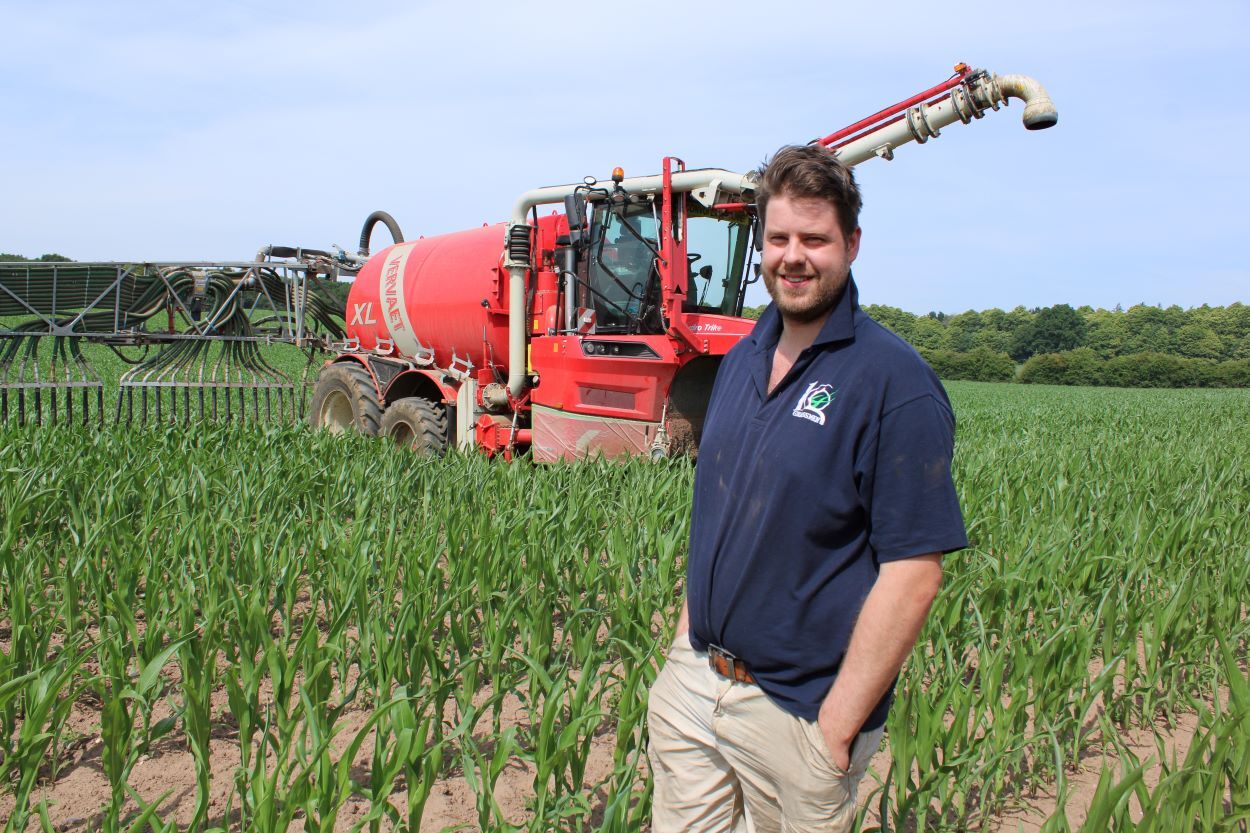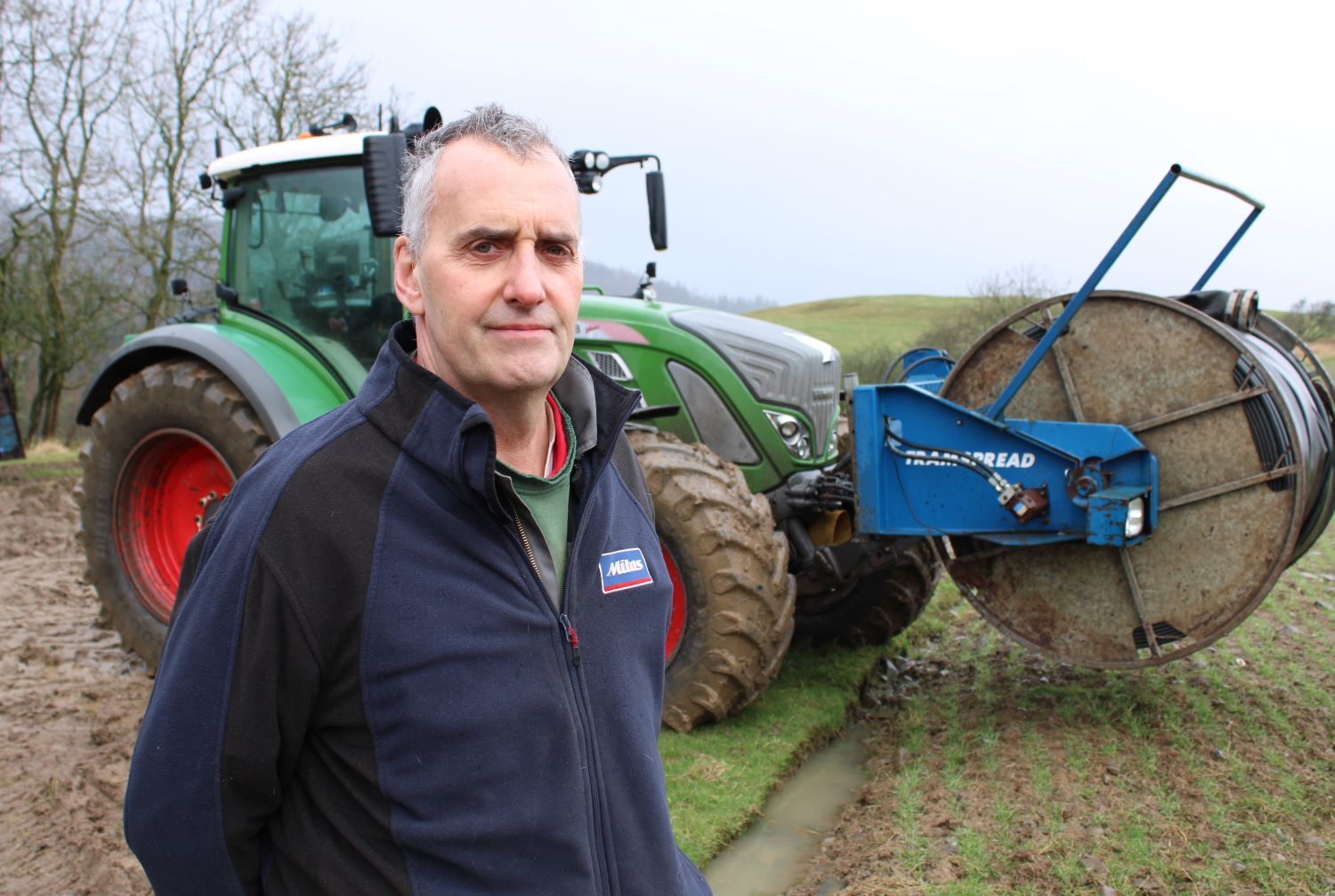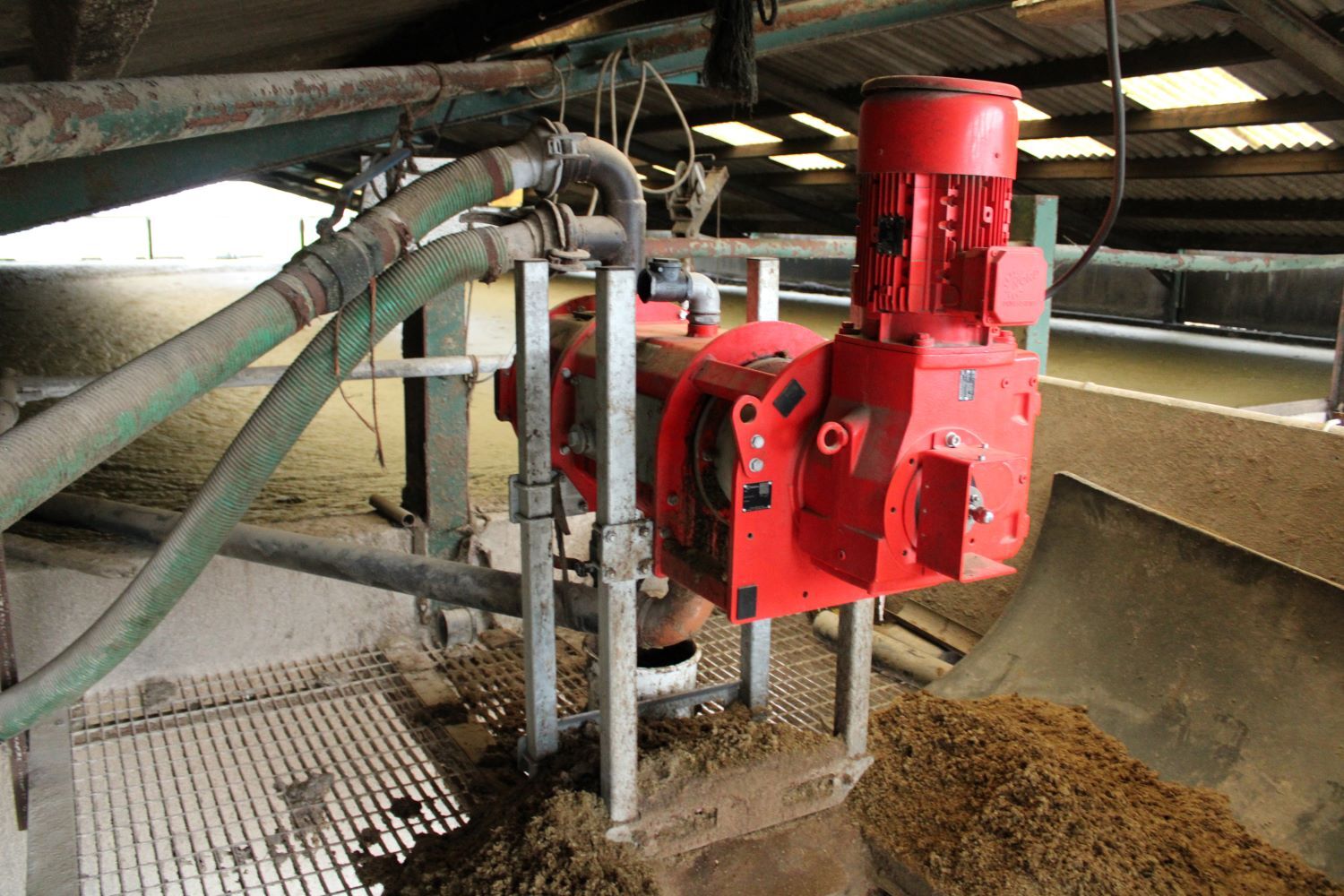How a versatile Compax dribble bar provides precise slurry application

Slurry and digestate specialists, Wrights Agricultural Contractors has invested in a Vervaet Hydro Trike XL self-propelled machine with an 18-metre Vogelsang Compax dribble bar to apply 50,000 cubic metres of slurry and digestate a year. Operator, Dan Marsden, suggests it is the perfect combination for working in maize and cereal crops.
“We had a 15-metre Vogelsang Compax dribble bar fitted to a Claas Xerion before this 18-metre model. The Vervaet is a more efficient machine for what we need, especially now we are working in maize. I’m operating at a flow rate of 18 cubes per hectare with ease,” he says.
He suggests that the 18-metre boom width, with auto shut off, is the most efficient and flexible system for the farms he works on around the business’s base in Matlock.
“If we ran a 24 or 36-metre boom, I would be running out halfway up the field and have to make more runs to refill. Whereas, a 15-metre or shorter bar would not suit the row spacing we manage, and I would have to run over the crops at times, which we always want to avoid,” he says.
In a maize crop with a 75-centimetre spacing, he is able to run all three sets of wheels in the rows, which means the wheels are only running over the crop briefly at headlands.
“The Trike has a 20-cube tank and I have onboard air to reduce the tyre pressures to 0.8 BAR, which minimises soil compaction but still feels stable when running over sometimes uneven and undulating land,” he says.
Benefits of precision spreading with the trailing shoe
The dribble bar is fitted with Vogelsang’s trailing shoe applicator to place slurry or digestate on to the soil, which minimises any crop contamination and helps the natural fertiliser to be absorbed more efficiently by the soil. The unit is mounted on a three-point hydraulic system and features Vogelsang’s comfort flow control (CFC) which enables each section to be shut off depending on what working width is required.
“With the Compax we have the flexibility to run with shoes or dribble hoses, depending on the crop. We mostly use the shoes because the design of the applicator parts the crop to place the slurry or digestate onto the soil,” he adds.
In the maize crop he has the booms set just above ground level to apply digestate without the shoes touching the soil, but on grass or in a cereal crop he can lower the booms to part crops that sit lower to the ground.
The auto shut off enables him to adjust in three metre sections from 18 metres to 9 metres, which he suggests meets the demands of almost any crop.
“We work in grass, wheat, barley and maize, so having the ability to adjust to the row widths is a real advantage,” he adds.

The Vervaet machine has a unique wheeled setup with a single front wheel and two rear axles that can be adjusted to slide out from the body of the machine to fit varying row widths.
“I can have all 5 wheels running in different lines and the wheels will extend to 4.8 metres from the chassis so that I am running in the row, rather than over the crop,” he says.
The Vervaet uses data from the business’s John Deere fleet to provide guidance, and with the dribble bar working on Isobus there are only two screens for Mr Marsden to operate.
“All the controls are Isobus and the guidance comes from the drill tractor’s Greenstar system. This means that on undulating ground and in tricky fields I can concentrate on making manual adjustments to the booms using the touch screen to get them to float in the best place,” he says.
Hard working and durable macerator
He suggests that other setups would see multiple control boxes all over the cab and separate controls which would make managing the flow much more difficult.
“I have the controls I need on a touch screen that can be operated in one press. This means that, with every run, I am focused on the dribble bar, its height, the flow rate and making sure it is applying the quantity of slurry or digestate in the right place,” he adds.

With support from Vogelsang and Riley’s, he has been offered advice on how to set up both the Vervaet and the dribble bar. However, he suggests maintenance has been minimal.
“We have had the Compax since 2021 and the only replacement parts have been a few new macerator blades. The Vervaet has proved very reliable, and it is better on fuel than the Xerion we ran before, using, on average, 5 litres of fuel less per cubic metre applied. Every farm is different, but this machine and dribble bar is the best combination we have used,” he concludes.

